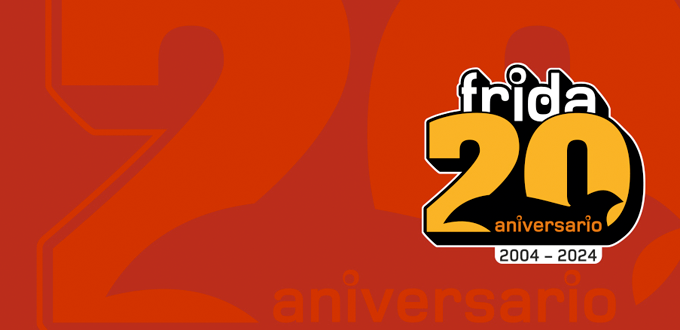FRIDA: Two Decades of Achievements and Transformations
02/05/2024

By Ernesto Majó, Deputy Executive Director at LACNIC
FRIDA, the Regional Fund for Digital Innovation in Latin America and the Caribbean, has reached its two-decade mark, providing an opportunity to honor achievements and insights. It is also a time to contemplate its current role in shaping the future with enthusiasm and determination.
In the world of the Internet, characterized by rapid and constant evolution, innovation stands out as the main driver of its development.
Two decades ago, FRIDA was born with a clear purpose: to meet the technological innovation needs of our region while engaging a community we had previously overlooked—the academic world. This is how this program started, aiming to spark and support the innovative energy of academic networks and universities, fundamental actors in the birth of LACNIC.
Through FRIDA, our goal is to bridge the gap between professionals and academics dedicated to applied technology in order to address specific issues related to the incorporation of the Internet and technologies across various social, economic, cultural, and productive sectors, as well as in the development of the Internet itself.
As part of FRIDA’s original motivation, we signed an agreement with the Institute for Connectivity in the Americas (ICA) and the International Development Research Centre (IDRC) of Canada. These organizations promoted initiatives in the region that addressed development and connectivity issues. The initial alliance was a great help, not only because of the funds that allowed us to start the program, but also for their valuable experience, which helped us improve our management approach and connect with the community we aimed to reach.
The definition of thematic axes in the first stages of FRIDA focused on technological innovation, regulatory innovation, and social innovation for development. Among these, the latter attracted the highest number of applications. There was a great demand for initiatives to connect and integrate communities and new areas of knowledge to the Internet world.
The integration of the first Project Selection and Evaluation Committee illustrates the effort to integrate the academic world and networks with the technological and commercial development of the Internet: Ida Holz, Fabio Marinho, Edmundo Vitale, José Soriano, Judith Marichall & Uca Silva. A select group of academic professionals, pioneers in network deployment and commercial Internet development.
The initial experiences were enriching for researchers and for those of us who work at LACNIC. They generated debate, opened dialogue, and kept us in direct contact with the academic world that provides so much help for deciding in which direction to channel our work. We soon recognized the great potential of our researchers, but also the lack of funds to allow them to develop their ideas.
The initial objective was simple but ambitious: to inspire creativity, ingenuity and collaboration among various actors to promote the training and involvement of professionals who bring their perspective to the development of a global Internet.
IDRC Canada, the Internet Society, and SIDA (Sweden) played crucial roles throughout the journey. Together, we completed various stages, experimented with different approaches and achieved objectives, all of which contributed to shaping what FRIDA has become today.
FRIDA is currently focused on serving the regional community by managing its own funds and adopting a more ambitious and selective approach in supporting initiatives, depending on the availability of resources. We are also capable of directing resources towards the areas that we perceive as essential for the research community: technical issues related to the operation of the Internet, digital resource management, routing security, and Internet operations.
Over the years, the program has evolved in response to changing challenges and emerging opportunities. It is the same FRIDA, yet it has evolved.
What has been FRIDA’s contribution? We can analyze it on two different and complementary levels. Firstly, in terms of its intended objectives, and secondly, as an institutional instrument.
FRIDA’s success can be measured by the projects we receive, the quality of the research presented, and the number of researchers supported.
Over two decades, FRIDA has created countless opportunities for researchers across Latin America and the Caribbean that have helped to solve specific problems related to the use and application of the Internet across various societal domains. Researchers who received modest funds and who had the opportunity to put their ideas into practice, to experiment, make mistakes and perhaps get it right, in short, to develop their capacity to innovate and conduct research.
That is FRIDA’s success in terms of its purpose: having generated a community of researchers and people in these 20 years, seizing opportunities with funds that are not easily accessible. An instrument scaled to the needs and capabilities of our region.
The program has also helped to make issues visible. Through our funding support, we managed to identify issues essential for regional visibility. This has prompted other organizations to allocate resources accordingly.
In terms of institutional value, FRIDA has proven to be an incredibly useful and valuable tool, as it has allowed us to stay connected with the academic and network innovation realms, providing funds to develop talent for the Internet of the future. As stated in our mission with FRIDA, “We build a regional community for a better global Internet.“
After 20 years of supporting innovation in Internet technologies, we can say that this is just the beginning of the journey.
I invite you to watch the 20 years of FRIDA session held within the framework of LACNIC41 here